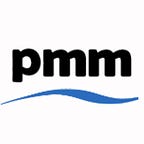Overview project team recruitment management
In the artcile “What is the number 1 PMO tool?“, I covered why it was the “people” who were the most important tool for a project. Without people nothing would be delivered.
Given the importance of people to the success of a project, the identification and recruitment of resources is critical. Over the coming weeks I am going to explore the important steps in the recruitment process and action you can take to implement an effective recruitment process.
Overview of project team recruitment process
There are a number of important steps that form the recruitment process.
Demand
This step is where you work out what resources you will need for the project in order to complete the required activities.
The information should be available from the relevant business case. The exception being where you are at the very start where you need to add resources to complete the business case.
Either way the demand needs to be established. This should include:
- Resource type
- Skill set
- Duration
- Location
Job Specifications
The job specification (job spec), is very important. This is where the recruiting manager should clearly articulate the role and the required skills.
A well written job spec will allow HR and recruiting agencies to understand the requirement and source candidates who are a good fit to the role. The more precise the spec, the better chance of getting a good candidate.
The job spec should also sell the role to the candidate. Increasingly job satisfaction is becoming more important than salary, especially for millenials (generation Y). So if you do not make a case why the role is interesting, you will miss out on good candidates.
Engage HR
At the very start of the process engage with your HR and / or recruitment teams. Make them aware that you have roles to recruit and provide an overview. This will mean that it won’t come as a surprise when you send them the job specs.
They should also help advise on the steps you need to follow. This includes at what point you can formerly start interviewing.
Approval to Recruit
This step is critical. Most organisations have very tight controls around the approval of new positions.
As soon as you know what type of role you need to recruit, make sure that you get the role into the recruitment approval process. This will typically require a number of approvals and will take time.
Review
When the role has been approved and the job spec released, both internally and externally, you should start receiving matching CV’s.
It is very important that you promptly review and provide feedback of the candidates you would like to interview and those you would not. Being a pro-active hiring manager will be well received by HR and the agencies. When they see you are responsive, you will get a better service. This may appear obvious but many recruiting managers take too long at this step and have to be chased for feedback.
Interviews
When you have identified potential candidates, ask HR to set up the 1st round interview. Again look to complete these in a very tight window.
The reason being that it ensures a rapid progression to the short list and, makes it easier to compare the candidates to each other to find the best fit.
Tracker
If you have a large number of candidates and / or recruiting for multiple roles, you will want to track progress.
A simple Excel tracker can be used so you can monitor progress and keep brief notes. This can then be used with HR to keep them appraised of progress.
Where an organisation has a robust process requiring an interview form to be completed for each candidate. Aim to do this during the interview and complete soon after. If not uou risk missing / forgetting details. However, I still recommend the tracker to keep the overall view across all candidates.
Offers
When all the interviews have been completed quickly move to offer. Again there may be a number of approval steps to allow the offer to be issued. Make sure you keep on top of this and where needed chase up the approvers.
There is nothing worse as a candidate to be told an offer is coming and then waiting weeks to receive it. This is where a candidate can be lost meaning all the hard work is wasted.
Prepare for Onboarding
When the offer has been accepted, this is the time to prepare for onboarding. You want to ensure that the candidate has the best experience when they walk in the door.
Make sure that the process is started for system access, building access, etc so that when they arrive on day 1, it all is working. As they say “you only get one chance to make a first impression”.
Summary
People are the number 1 asset for a project. Ensurng a focused, timely recruitment process is critical. The above steps form the framework for a project resource recruitment process.
Over the coming weeks I will cover the steps in more detail.
